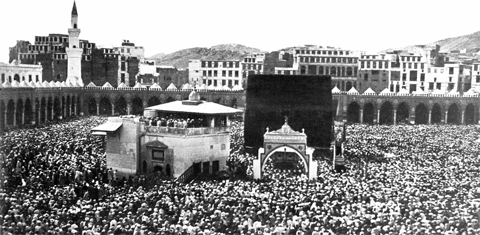 The holy mosque in Makkah in the past
The holy mosque in Makkah in the pastKUWAIT: Devout Kuwaitis of bygone eras used to undergo rigorous preparations for the 'Haj', an annual Islamic pilgrimage to the holy city of Makkah and a compulsory obligation for all adult Muslims physically capable of embarking on the journey. Given the enormity of the "Hajj" pilgrimage, one of the five pillars of Islam that constitute the foundation of Muslim life, our forefathers hopped on camels and braved an arduous journey that lasted three months (1,527 kilometers, 948 miles).
Moreover, in an interview with KUNA yesterday, Kuwaiti civil researcher Saleh Al-Methen noted that the "inaugural Kuwaiti Haj campaign actually dates back to 1800", when the country was a fledgling emirate. Speaking on intense preparations for the "Hajj" pilgrimage, Al-Methen said that "leaders of the Hajj campaigns made arrangements months in advance where they would purchase all necessities and contact sage tour guides", veterans these leaders often relied on to facilitate the journey to reach the zenith of Islam.
Furthermore, 'Haj' campaign leaders also made sure to stock up on copious amounts of food that included dates, rice, flour and tea in efforts to ensure that the journey to Makkah would go off without a hitch. Meanwhile, Al-Methen revealed that Kuwaitis then would often offer pecuniary assistance to those unable to afford the cost of the journey, an act of sheer benevolence that is seemingly embedded in this diminutive Gulf nation's culture.
The Kuwaiti researcher also talked about various hurdles that often encumbered the journey to 'Haj', as pervasive war, political instability and the spread of contagious diseases accentuated the hardships travelers had to endure. Describing jubilant scenes of the return of pilgrims to the country, Al-Methen noted that children pranced around villages serenading the pilgrims, who would often dole out commemorative gifts such as 'Zamzam' water, prayer rugs and other ornaments in return. He also added that it was customary then for pilgrims' domiciles to be adorned with green flags that heralded joyous gatherings that marked the culmination of a debilitating yet rewarding odyssey. - KUNA










